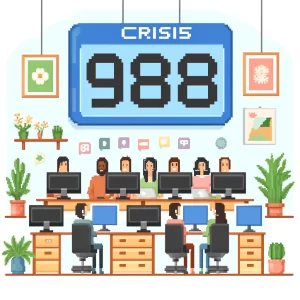
Guiding the Use of Opioid Litigation Funds
The opioid crisis has cast a long shadow over countless lives across America. However, a beacon of hope has emerged from the legal battles fought against opioid manufacturers, pharmaceutical distributors, and pharmacies. The settlements from these lawsuits present an unprecedented opportunity to fund lifesaving programs for people who use drugs. To ensure these funds are used most effectively, jurisdictions must adopt five guiding principles (as articulated by Johns Hopkins)
Spend the Money to Save Lives
When dealing with the fallout of the opioid crisis, it’s crucial to prioritize saving lives. With many states and localities facing budget shortfalls due to the COVID-19 pandemic, the temptation to use opioid settlement funds to plug budget gaps is high. However, these funds should not replace existing expenditures but should enhance current efforts to address the opioid crisis.
In the U.S., only about 10-20% of people with opioid use disorder receive any form of treatment. This staggering gap in care needs to be addressed immediately. Settlement funds must be allocated specifically for opioid crisis interventions. Creating a dedicated fund for these dollars can help ensure they are used for their intended purpose.
Use Evidence to Guide Spending
Decisions on how to spend the funds should be based on solid evidence. Over the years, researchers have identified which treatments and interventions are effective. For instance, medications like methadone and buprenorphine can reduce the chance of overdose death by more than 50%. Despite this, many residential treatment facilities prohibit their use. Settlement funds should be directed toward programs proven to work and helping facilities transition to these evidence-based treatments.
Jurisdictions should also invest in building data collection capacities to monitor the effectiveness of funded programs, especially in historically underserved communities of color.
Invest in Youth Prevention
Preventing substance use from an early age can have lasting benefits. Overdoses among adolescents have been rising, with nearly 8,000 teenagers dying from opioid overdoses between 1999 and 2016. Prevention programs targeting youth can stop substance use before it starts, reducing the likelihood of addiction and other negative outcomes.
Investing in research-backed youth prevention programs can yield significant returns. By preventing various adverse effects related to substance use, these programs can save up to $18 for every dollar spent.
Focus on Racial Equity
The opioid crisis does not affect all communities equally. Black populations and American Indian and Alaska Native (AI/AN) communities have seen disproportionate increases in overdose deaths. Historically, discriminatory policies have resulted in people of color being more likely to face criminal justice involvement for drug use and having less access to treatment and recovery services.
Settlement funds should be used to invest in communities of color, addressing the root causes of health disparities and removing barriers to effective treatment. Additionally, anti-stigma campaigns and policies supporting diversion from arrest to treatment can help dismantle the punitive approaches that disproportionately affect these communities.
Develop a Fair and Transparent Process for Fund Allocation
A transparent and inclusive process for deciding how to spend the funds is essential. Public health leaders, people with lived experience, and community organizations should be actively involved in the decision-making process. This approach ensures that the funds address the needs of those most affected by the opioid crisis.
Engaging a diverse group of stakeholders helps create a comprehensive plan that considers various perspectives and needs. This process should also include mechanisms for public input, ensuring that the voices of families and community members are heard.
Why This Matters
The opioid crisis has claimed too many lives and disrupted countless communities. The settlement funds represent a rare chance to make a significant impact. By following these guiding principles, jurisdictions can ensure that the funds are used to save lives, support effective programs, and promote equity.
Public health practitioners, policymakers, and community leaders must seize this opportunity to invest in sustainable, evidence-based solutions. The principles outlined above provide a roadmap for using the funds wisely and ensuring the greatest possible impact.
Let us know your thoughts!
- How do you think your community can benefit from the principles guiding the use of opioid litigation funds?
- What other evidence-based interventions should be prioritized to address the opioid crisis effectively?
Be a Health Innovator – Get Weekly Updates!
Stay informed and active. Subscribe for free and share this blog to make a difference in public health.



